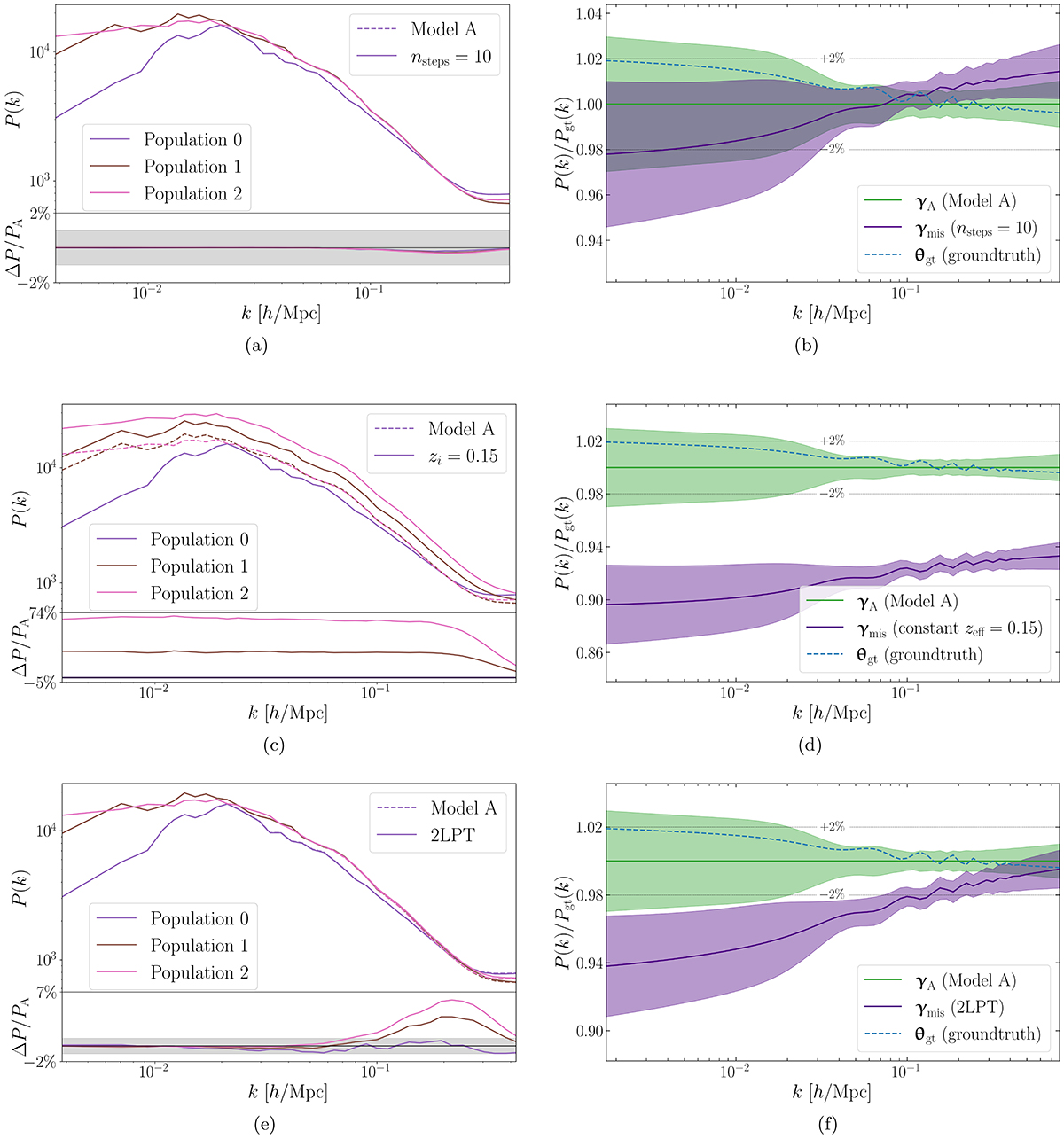Fig. 11.

Download original image
Impact of the gravity solver parameters on the SELFI posterior. Panels (a, c, e) display the summary statistics Φ for the three galaxy count fields, comparing the well-specified Model A (dashed lines) with the misspecified model (solid lines). The lower parts of these panels show the relative error between the two models, with shaded regions corresponding to a 1% error margin. Panels (b, d, f) show the corresponding SELFI posteriors for the initial matter power spectrum θ, with the well-specified and misspecified models represented by green and indigo lines, respectively. (a) Example of summary statistics for a single realisation with nsteps = 10 (solid lines) as opposed to nsteps = 20 time steps for Model A (dashed lines) in the gravitational evolution with COLA. Although the direct error remains well below 1% across all scales, the inverse error on the SELFI posterior (b) reaches 2% at the largest scales, corresponding to a deviation greater than 1σ from the well-specified Model A. (c) Summary statistics using only the final snapshot at redshift z1 = 0.15 for the three mock galaxy populations, thereby neglecting light cone effects (solid lines). The forward error reaches 74% at the largest scales for the most distant galaxy population, and the corresponding SELFI posterior (d) significantly rejects the ground truth across all scales. (e) Summary statistics using a pure 2LPT gravity model instead of N-body simulations to define the galaxy populations (solid lines). The forward error reaches ∼7% at the smallest scale, and the ground truth is significantly rejected by the SELFI posterior (f), which deviates by more than 2σ compared to Model A at the largest scales.
Current usage metrics show cumulative count of Article Views (full-text article views including HTML views, PDF and ePub downloads, according to the available data) and Abstracts Views on Vision4Press platform.
Data correspond to usage on the plateform after 2015. The current usage metrics is available 48-96 hours after online publication and is updated daily on week days.
Initial download of the metrics may take a while.


